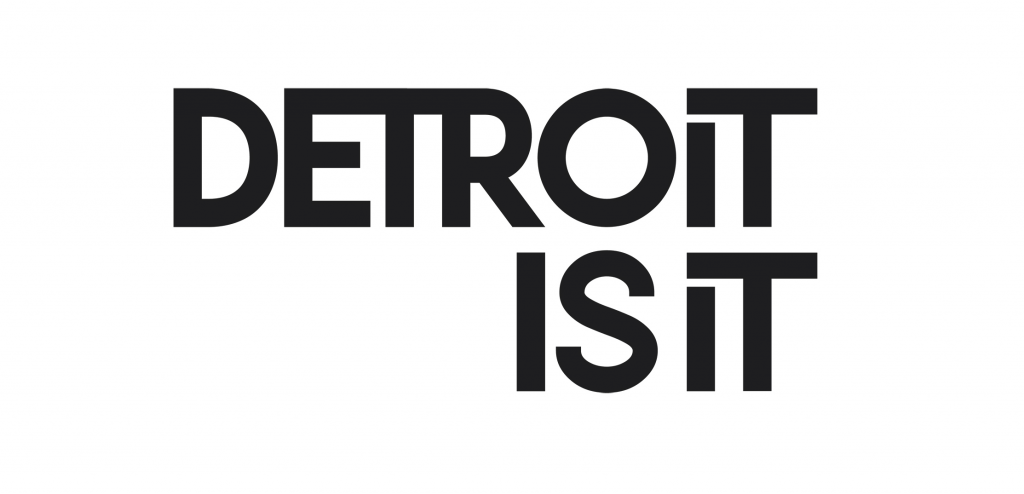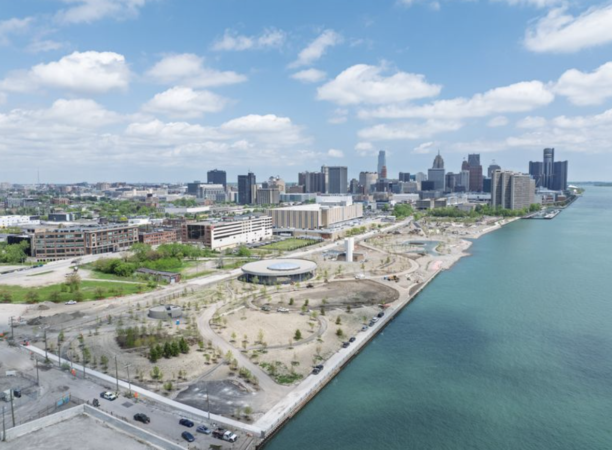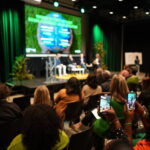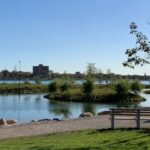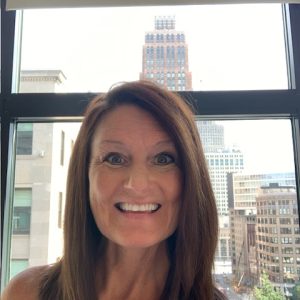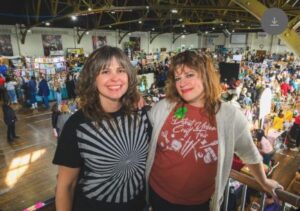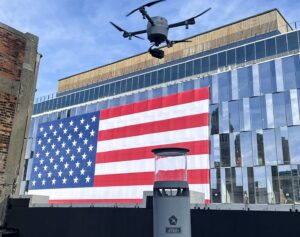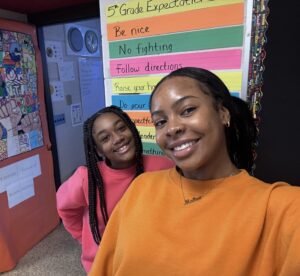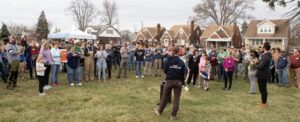As Detroit continues to lead in conversations around sustainable design and resilient infrastructure, the Sustainable Urban Design Summit (SUDS) brings together city leaders, innovators, and advocates to share ideas and solutions shaping the city’s future. The Gilbert Family Foundation, a sponsor of SUDS, supports a range of neighborhood initiatives focused on equity, climate resilience, and community well-being.
Detroitisit spoke with Darnell Adams, Vice President of Detroit Community Initiatives at the Gilbert Family Foundation, about Detroit’s opportunity to reimagine its landscape, the growing role of technology and collaboration in sustainability, and how thoughtful design can create healthier, more inclusive communities.

DARNELL ADAMS
Detroitisit: Detroit has been described as a city in constant reinvention. Why do you see sustainability as such an important focus for this next chapter?
Adams: Detroit’s story has always been one of rebuilding. We’ve seen tremendous population loss over the past few decades and, with it, large-scale demolition — about 60,000 parcels in the last ten years alone. That creates both a challenge and an opportunity. We now have the ability to rebuild our infrastructure in a way that’s smarter, more resilient, and more responsive to our climate realities.
Historically, Detroit had one of the richest tree canopies in the country. Over time, disease, disinvestment, and urban change eroded that, which has contributed to hotter neighborhoods and other environmental health issues. Rebuilding that canopy, reimagining our vacant land, and designing for resilience are essential to how Detroit grows next.
What’s also exciting is how technology is becoming part of our sustainability story. Detroit is a tech city at heart — and that gives us the chance to reimagine mobility, transit, and infrastructure in ways that other cities can learn from. We don’t have to spend billions replicating old systems; we can design what comes next.
Detroitisit: When you talk about “climate resilience,” what do you think has changed in how people and institutions are approaching it?
Adams: It’s a mix of urgency and awareness. The climate issue isn’t new, but the impact has become harder to ignore. I’ll never forget the 2021 floods — my entire basement filled with water. We’ve had several “once-in-500-year” floods in just the last decade. Events like that force people to think differently about infrastructure and preparedness.
We’ve also seen stronger partnerships between communities, nonprofits, and tech organizations. On Detroit’s east side, for example, East Side Community Network has partnered with JustAir to monitor neighborhood air quality and hold municipalities accountable. That’s the power of technology and grassroots collaboration coming together to address environmental justice in real time.
Detroitisit: What drew you personally to this work?
Adams: I grew up in Ravendale, near Dickerson and Harper. I watched my neighborhood change dramatically — from thriving to struggling — over the course of ten years. That experience drove me to study urban and regional planning at Michigan State, where I also focused on environmental sustainability.
I saw firsthand how toxic our built environment can be — contaminated soils, aging buildings, and unsafe land use patterns. My early work with the MEDC involved making sure communities had the funding to clean up those brownfield sites so they could be redeveloped safely. That work shaped my belief that sustainability isn’t abstract; it’s about protecting people’s health and restoring opportunity in neighborhoods that have carried the burden of environmental harm for too long.
Detroitisit: Sustainability today is often defined by the intersection of people, planet, and prosperity. How do you think Detroit is addressing those layers in design and development?
Adams: Every Detroiter should benefit from the city’s sustainability goals. What’s changed in recent years is the level of engagement — planners and developers are listening more intentionally to residents about how projects affect their day-to-day lives.
A great example is the Joe Louis Greenway. It wasn’t built as a prescribed path — it evolved through community input. Residents shaped how it looks, feels, and functions, and that engagement is part of what will make it successful long term.
We’re also creating pathways to jobs within this work. Through partnerships with organizations like The Greening of Detroit, we’re training residents as “tree artisans” who can grow into line worker roles with companies like DTE. That’s sustainability in action — creating opportunity while improving the environment.
Even at the city level, you see this thinking play out. Detroit’s parks are incorporating retention ponds and green infrastructure to manage runoff and prevent flooding. Those small design decisions add up to real health benefits for communities.
Detroitisit: Are you seeing a cultural shift in how residents view these challenges?
Adams: Yes — people are more aware and more vocal. A big reason is the work of community organizers and nonprofits who are equipping residents with knowledge and tools to advocate for themselves.
When engagement is built into a project, it changes outcomes. Residents understand why infrastructure matters — whether that’s flood management, air quality, or tree planting — and they begin to see their role in shaping the solution.
At the Gilbert Family Foundation, we believe awareness and action go hand in hand. Events like SUDS are critical because they bring people together to learn, collaborate, and imagine new possibilities. The conversation itself builds momentum.
Detroitisit: The Gilbert Family Foundation works across many sectors. How do partnerships shape your approach to sustainability?
Adams: Partnerships are everything. We don’t do this work in isolation — 99% of what we accomplish is in collaboration with other organizations, whether that’s the City of Detroit, local nonprofits, or community coalitions.
For example, we support projects that help residents understand and address infrastructure challenges in their neighborhoods — things like stormwater management or home repair programs tied to climate resilience. We also invest in partners who can translate sustainability into economic opportunity.
Our role is to put resources where they’re most needed and connect the dots between environmental well-being, health, and equity. Sustainability isn’t a single initiative; it’s a network of actions that work best when everyone’s at the table.
Detroitisit: You’ve traveled to other cities studying sustainability. What lessons can Detroit take from national or global examples?
Adams: We’ve learned a lot from peers. Cities like Atlanta are doing an incredible job with climate resilience, leveraging their topography and planning capacity. Minneapolis stands out for its public space design — thoughtful, functional, and community-oriented.
But Detroit also has unique strengths. One of our greatest assets is our vacant land. Many cities wish they had the room to innovate that we do. We can repurpose land for solar energy, stormwater management, or greenways — all while ensuring residents have a voice and share in the benefits.
Another big lesson comes from the Atlanta BeltLine project. They didn’t secure enough of the land around it early on, which led to displacement. Detroit has the chance to learn from that and build with equity from the start.
Lastly, collaboration between public, private, and philanthropic sectors is crucial. Too often, cities operate in silos. Detroit is proving that when we align those efforts, we can accelerate progress and ensure sustainability translates into tangible outcomes for everyone.
As always, be sure to subscribe to our newsletter for regular updates on all things Detroit.
